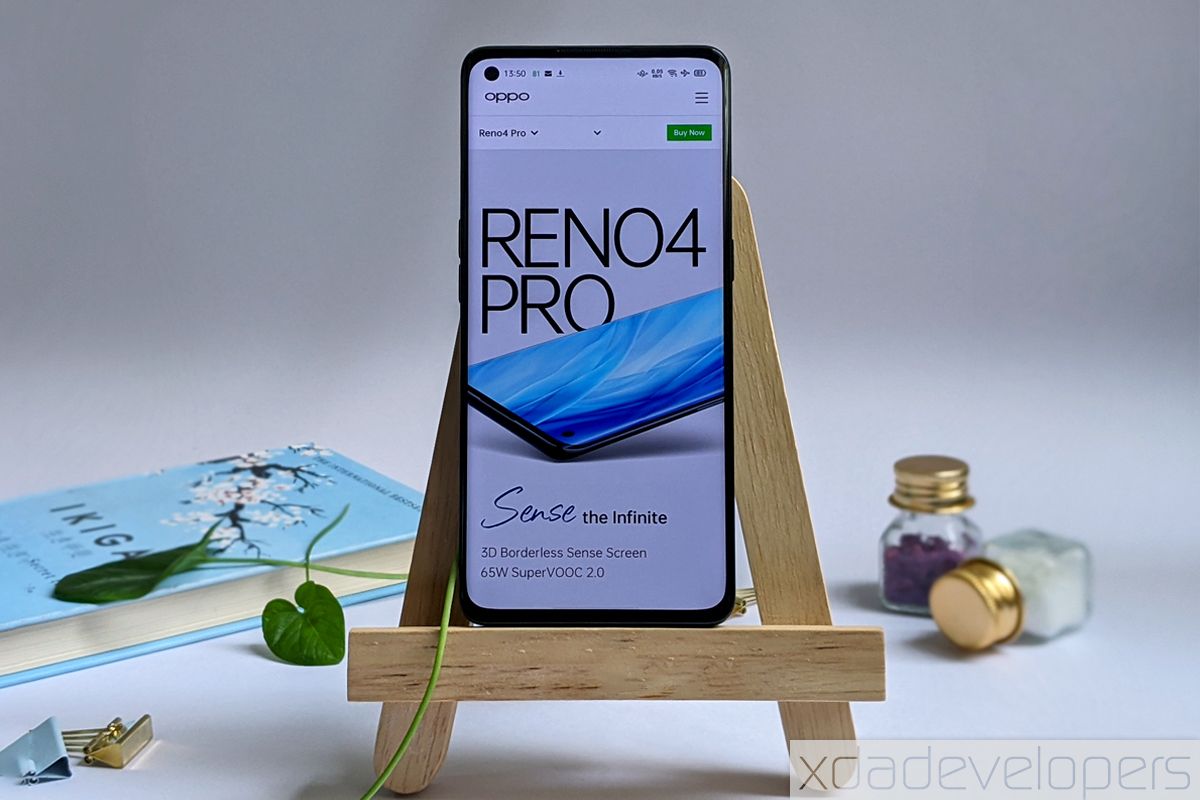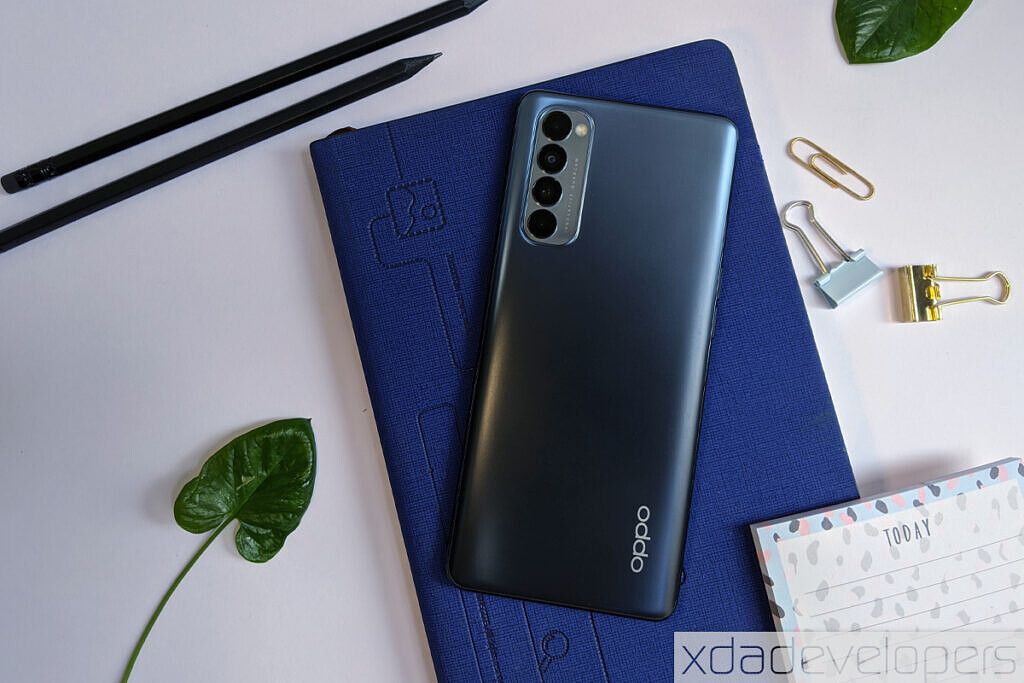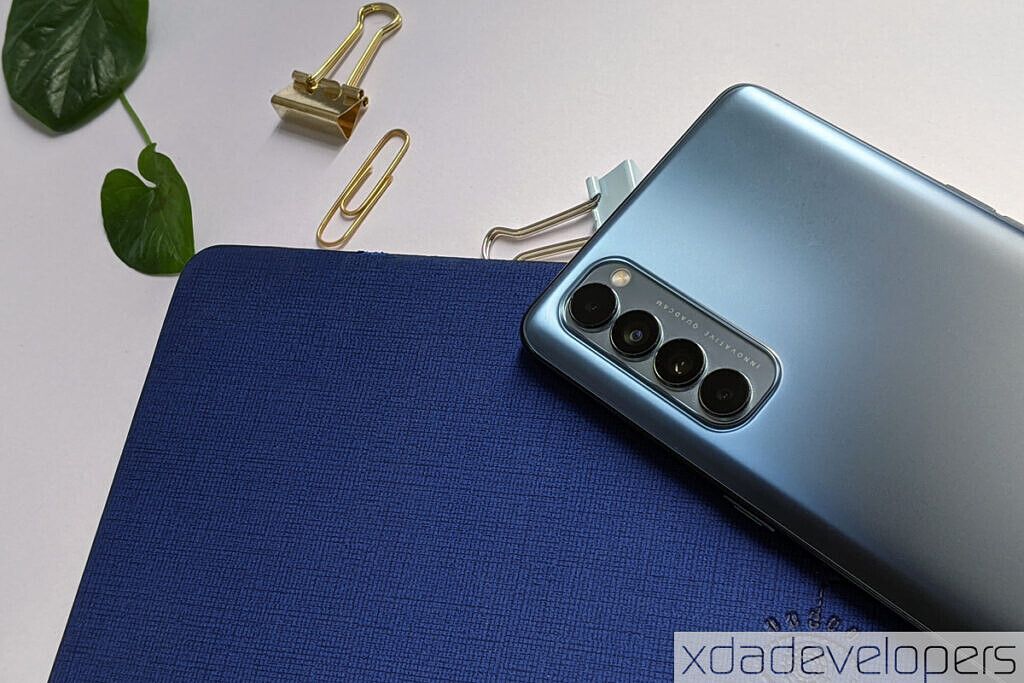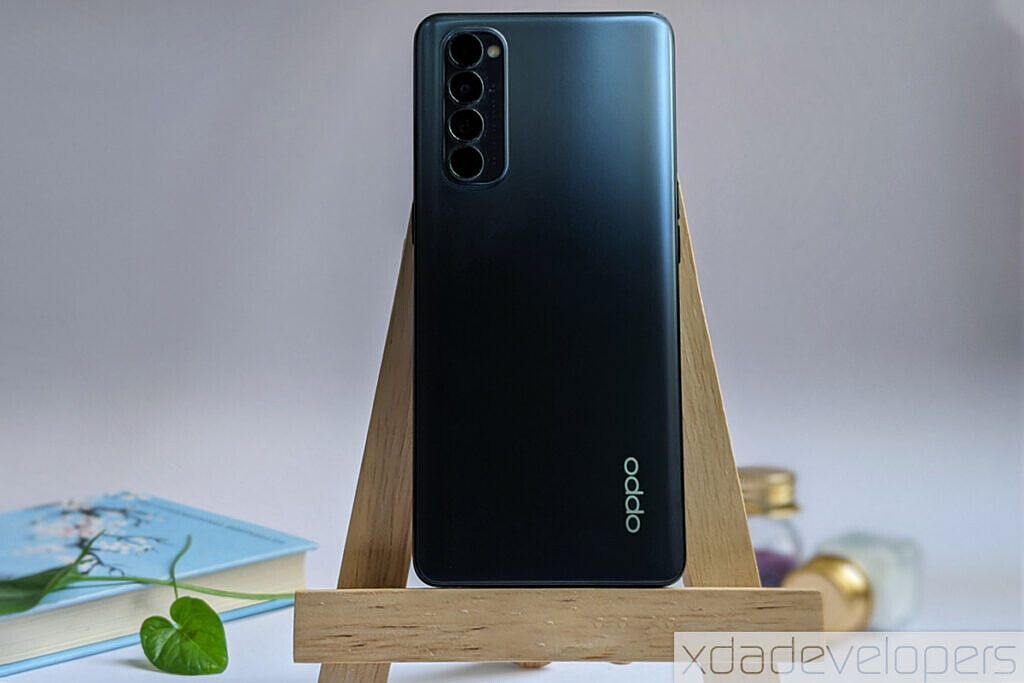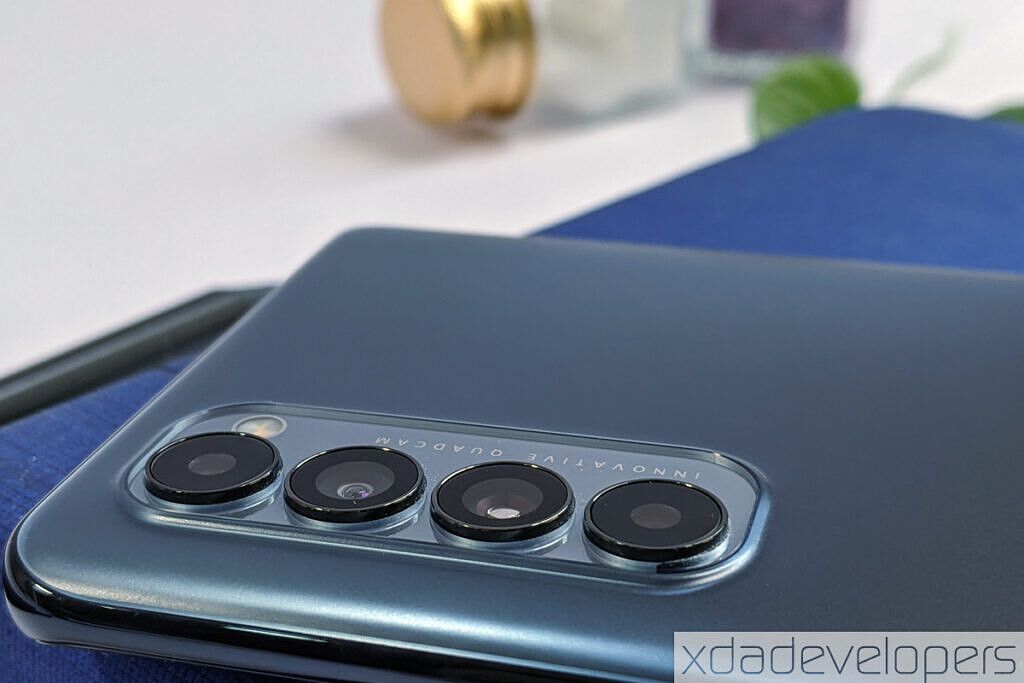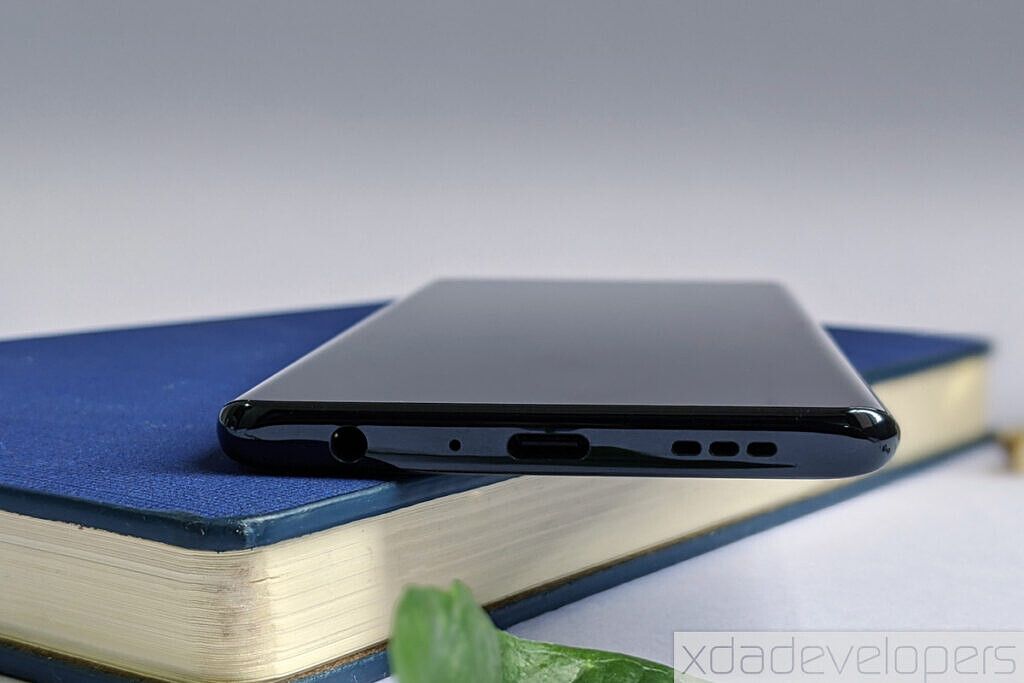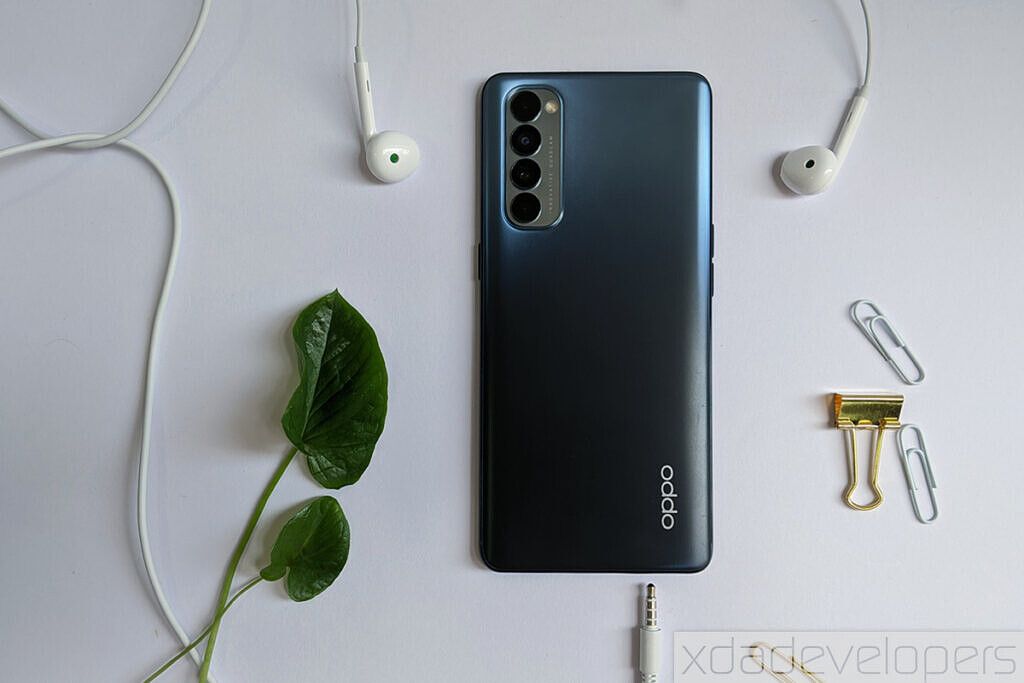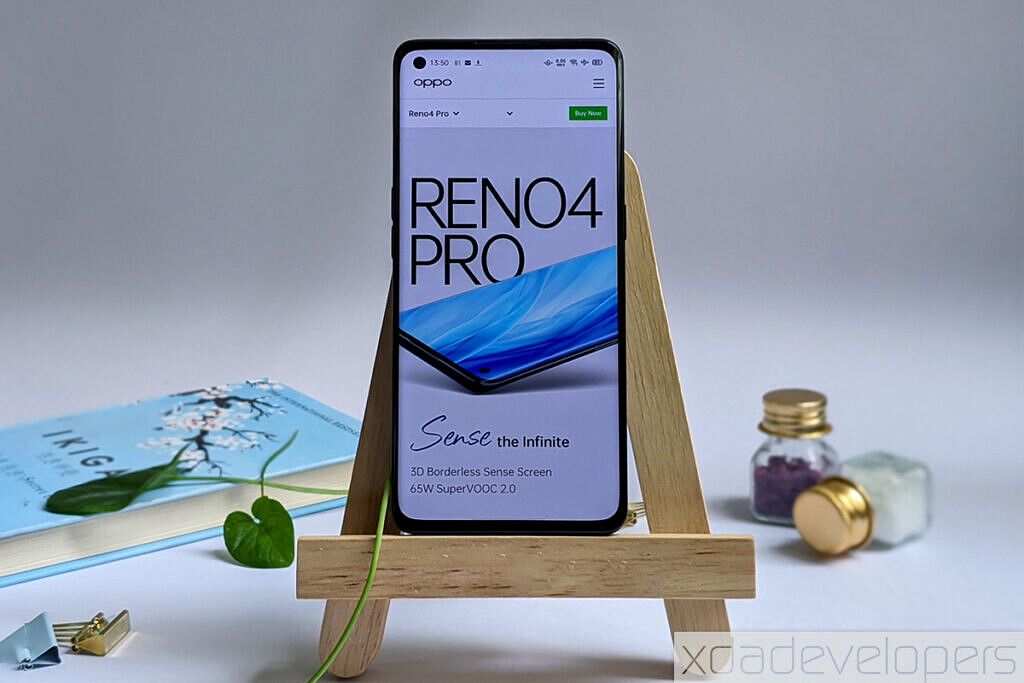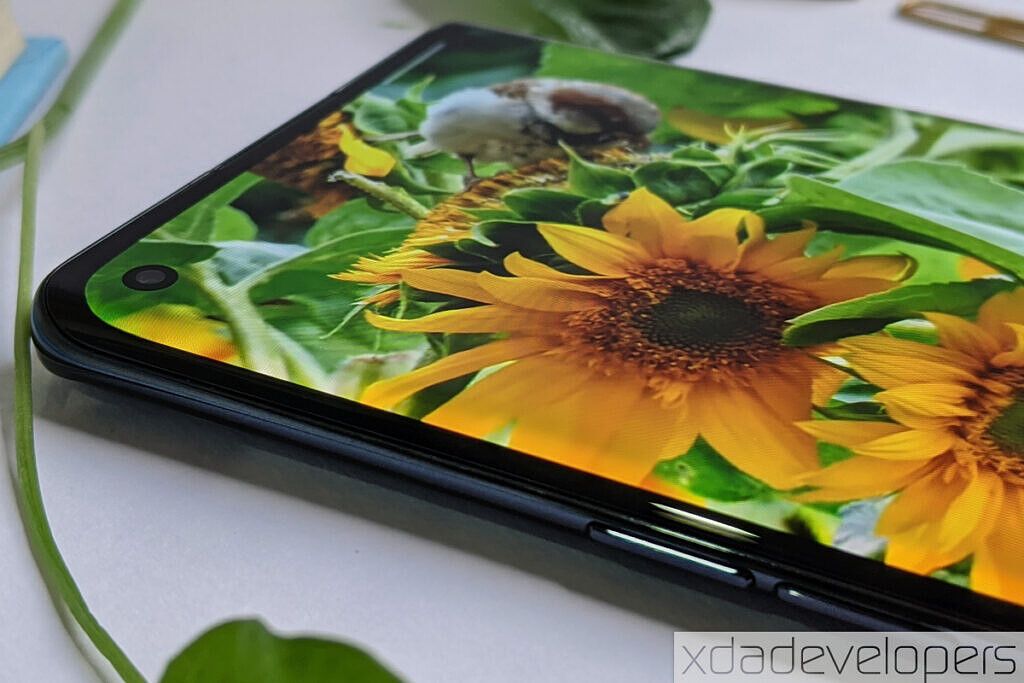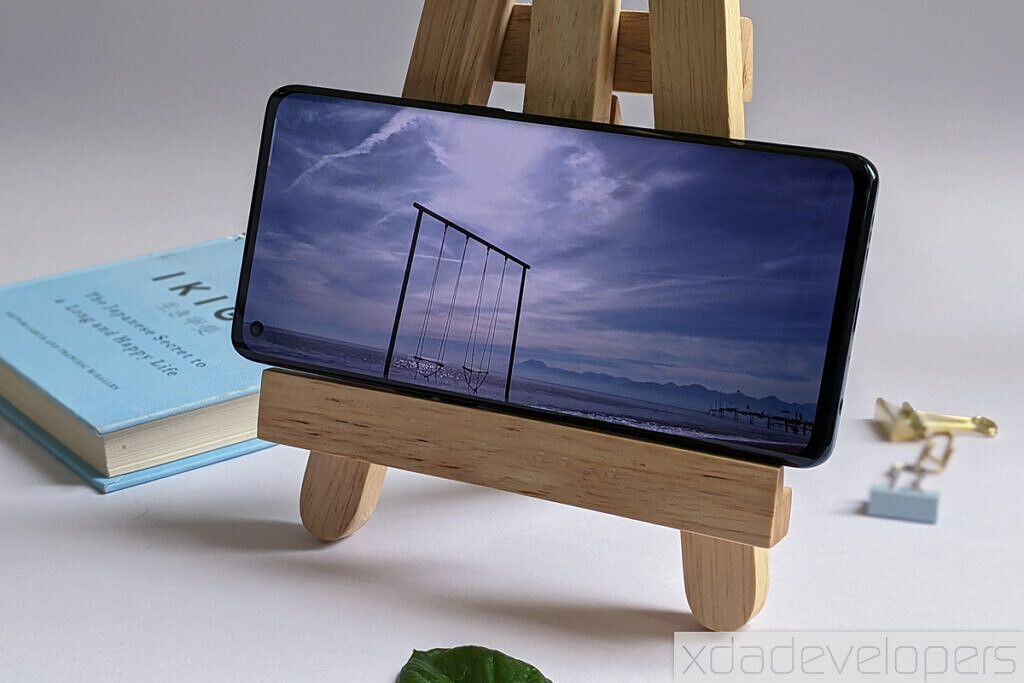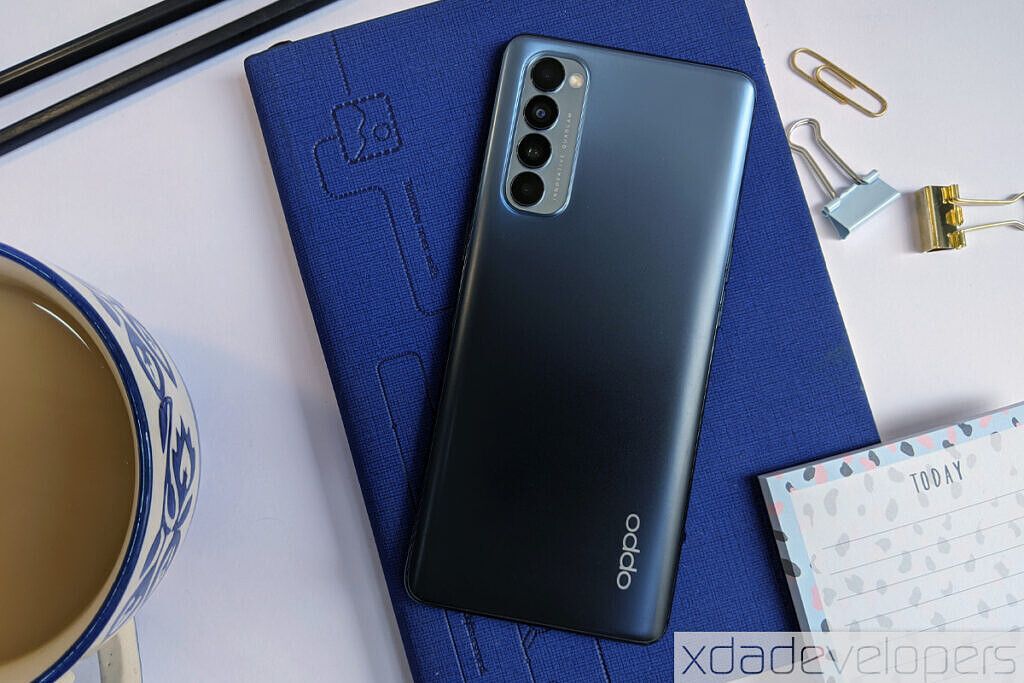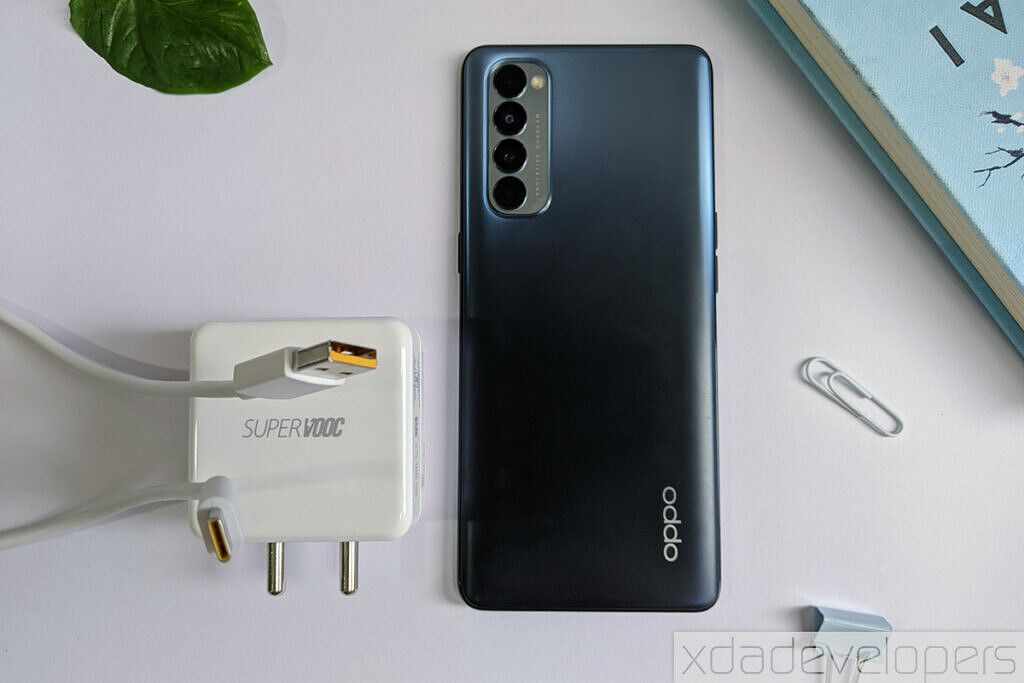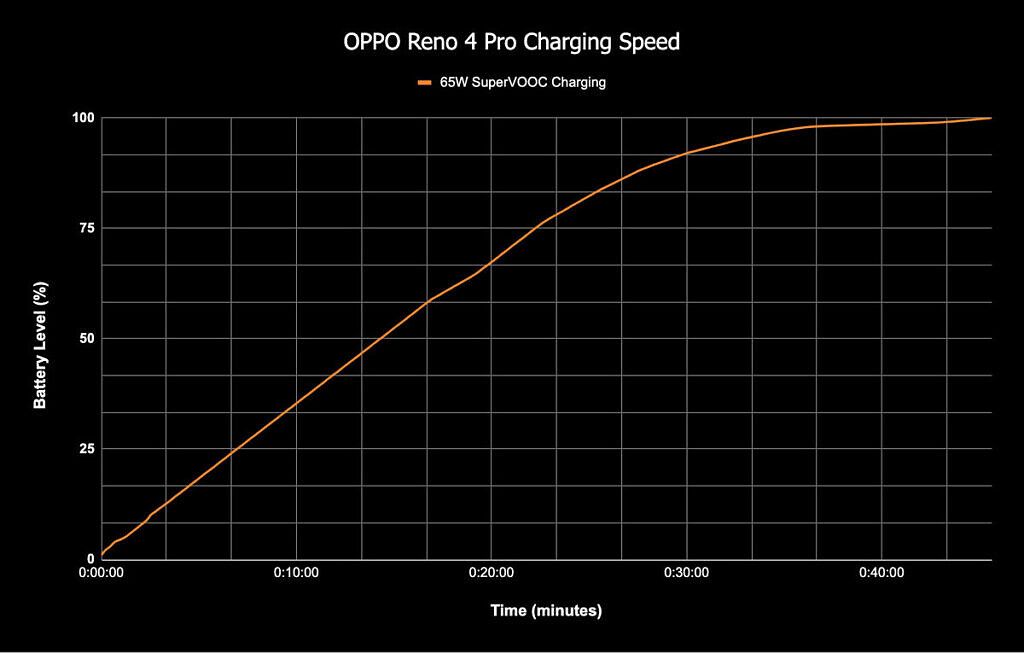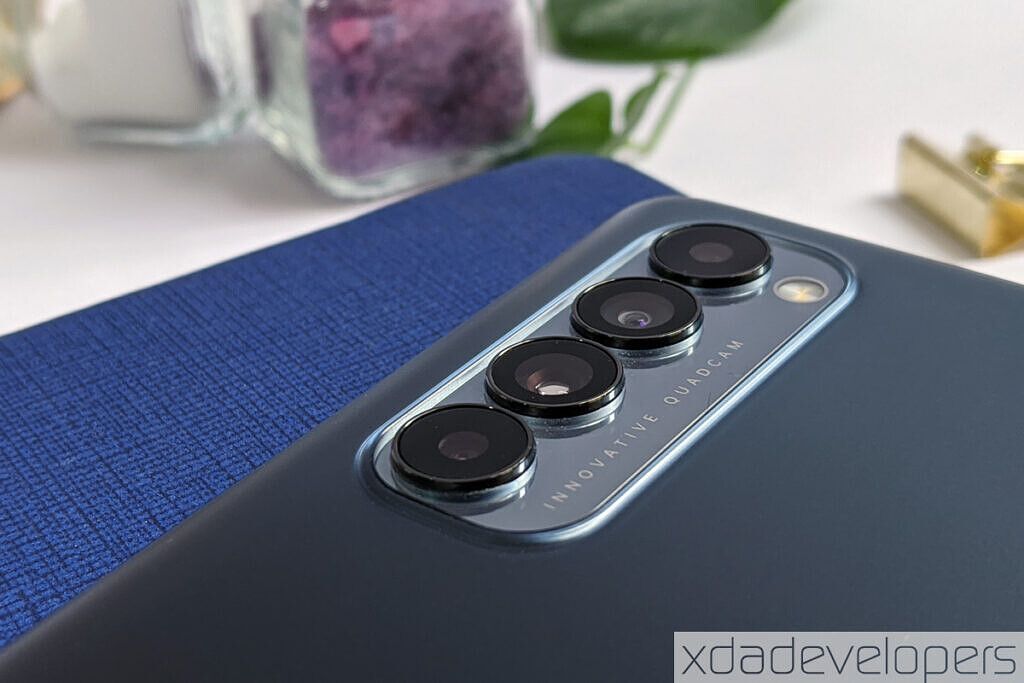OPPO is the world's fifth-largest smartphone brand by volume. As the first phone brand under China's BBK Electronics Group, OPPO has dominated the smartphone markets of China and parts of Asia throughout the 2010s. However, it remained alien to the majority of users in the West until its flagship, the OPPO Find X, caught the world's attention in 2018 with its mechanically driven camera module. In the following year, i.e. 2019, OPPO announced the Reno series that underlined a healthy blend of style and performance. With quarterly updates, the OPPO Reno Series is already four generations old — even without including variations in Chinese and global models. It is commendable that OPPO has kept its pace despite the global pandemic and launched the OPPO Reno 4 and the OPPO Reno 4 Pro globally. The two Reno 4 series smartphones, especially the Pro, don a premium outfit despite mediocre components inside.
OPPO bundles the Reno 4 Pro's ergonomically and aesthetically attractive design with a vibrant and fluid 90Hz Super AMOLED display and quirks such as 65W charging. The phone appears to be ideal for anyone who wants charming looks and reliable performance out of the smartphone but without high expectations for performance or gaming. The only challenge the smartphone faces is a high price that is comparable to flagship killers like the OnePlus 7T and Realme X2 Pro. Notably, OPPO unveiled the Reno 4 series in China before launching it globally, but those devices vary from the global variants considerably in terms of specifications.
I have been using the global variant of the OPPO Reno 4 Pro for a month. You'll find out my thoughts on whether its premium design helps the smartphone make the cut despite mid-range processing capabilities in this review! Before starting, here's a look at the specifications of the Chines and Global variants of the OPPO Reno 4 Pro:
OPPO Reno 4 Pro Chinese and Global Specifications
| Specifications | OPPO Reno 4 Pro China | OPPO Reno 4 Pro Global |
|---|---|---|
| Dimensions and Weight |
|
|
| Display |
|
|
| SoC |
|
|
| Storage and RAM | 8GB + 128GB | 8GB + 128GB |
| Battery and Charging |
|
|
| Rear Camera |
|
|
| Front Camera |
|
32MP |
| Fingerprint Sensor | In-display optical fingerprint | In-display optical fingerprint |
| Android Version | ColorOS 7.2 based on Android 10 | ColorOS 7.2 based on Android 10 |
About this review: OPPO India loaned us an 8GB+128GB variant of the Reno 4 Pro. However, they did not have inputs on the content of this review. I have been using the phone for about a month.
Design
The OPPO Reno 4 Pro is extremely convenient to hold in hand, thanks to a slim structure. The curved edges of the back panel add to the ergonomics of the design. While the smartphone measures only 7.7mm in thickness, the tapered edges on the back and the display make it seem much slimmer.
The OPPO Reno 4 Pro comes in Starry Night and Silky White colors. The satiny surface on the back panel definitely feels like silk and justifies this naming. Although the Reno 4 Pro's back gives the impression that it comprises frosted glass, it is made out of a premium-grade plastic. The use of plastic, as opposed to glass on the Chinese variant of the smartphone, results in a weight of only 161 grams. The lighter weight makes the phone easy to handle and really desirable — especially when most smartphone makers are actually tossing the aspect of usability out of the window and increasing the weight of their smartphones, stuffing them with more features.
Despite being made of plastic, the back feels durable and sturdy. Although sweat quickly deposits on the surface, it is not strikingly visible. At the same time, the body is also moderately resistant to scratches.
The camera array on the back of the OPPO Reno 4 Pro sits on top of a platform that is raised slightly. Unlike the rest of the back, this raised platform has a mirror finish. While this platform does not explicitly look like a camera bump, all four cameras protrude out individually, and that effectively is the same as a camera bump. The finish as well as the rings around the camera makes the Reno 4 Pro looks starkly similar to the iPhone 11 series, even despite the differences in the material.
Like the back panel, the side rails on the OPPO Reno 4 Pro are also made of a premium grade plastic material. The midframe is curved and tapered in the middle whereas it is flattened at the top and the bottom. The surface of the frame looks like ceramic but has a soft rubber-like feel to touch — even though it is made of a relatively rigid material. The power button, accented by a thin groove painted in shiny green color, lies on the right side of the frame. Separate buttons for volume up and down lie on the left side. The bottom features the mono loudspeaker, the primary microphone, a USB Type-C port, and a headphone jack (thank goodness!). On the top lies a secondary noise-canceling microphone alongside the inlet for the SIM tray.
Unquestionably, the OPPO Reno 4 Pro's elegant design beats the style statement of most other mid-rangers. The handy and ergonomic build and peculiar eye-catching gloss over the back make the phone hard to resist, especially if looks are among the most essential features you desire in a smartphone.
The beguiling looks are complemented by a tall, bright, and strikingly vibrant display. Although the display matches that on the OnePlus 7T in terms of dimensions, OPPO's decision to curve the longer edges aids in the ergonomic design of the smartphone.
Display
The OPPO Reno 4 Pro is equipped with a 6.5-inch Full HD+ Super AMOLED display that features a tiny hole-punch cutout for the selfie camera on the top left corner. The display has a screen-to-body ratio of ~92%, and the thin strips on the top and bottom of the display validate this.
As mentioned above, the slightly curved edges of the display make it easier to wield the smartphone without obstructing screen usage. The curvature along the edge, in addition to the light weight of the smartphone, facilitates stretching the thumb to the far edge of the display without any assistance from the other hand.
OPPO has big claims for the quality of the Reno 4 Pro's display, starting with a peak brightness of 800 nits that increases up to 1100 nits for HDR content on YouTube. This trait allows OPPO to position the Reno 4 Pro among premium — and flagship killer — smartphones. While I do lack the proper equipment to verify OPPO's claim, I can still confidently say that the Reno 4 Pro's display shines bright against most odds, including bright sunlight hitting it upfront. Indoors, I have kept the brightness mostly around 25-30%, and anything brighter than that feels extreme on the eyes.
OPPO boasts about the display's high contrast ratio of 5,000,000:1. In practical usage, the display visibly has deep blacks with a neutral white balance. Besides being cranked to a really high value, the display's brightness can be reduced to much lower than competitors with Super AMOLED displays.
Additionally, OPPO also says that the display covers 100% of the DCI-P3 color gamut in the Vivid mode. The display feels vibrant, thanks to sparkling colors, and offers a very pleasant viewing experience for movies or other video content. If you are not a fan of punchy colors, you can also switch to the standard mode for relatively duller colors that are gentle on the eyes.
The OPPO Reno 4 Pro's display is certified for HDR10 capabilities in contrast to the HDR10+ certification on the Chinese variant. This allows you to watch HDR videos on YouTube, HDR content is not available Netflix, Amazon Prime Video, or similar OTT video services.
The Reno 4 Pro's display also supports an Edge Lighting feature and dazzling animation flares up the edges of the display every time you receive a notification with the screen locked. You can choose from among three different color options for the feature, including Neon purple, Ocean blue, and Amber orange.
The Reno 4 Pro also supports Always-on Display (AOD) but you won't be able to find the option using the search in Settings. For AOD, you can choose from a range of digital and analog watchfaces. You can also choose whether or not to show the notifications on this screen. Unfortunately, there's no tap to wake functionality, with or without AOD, and you need to press the power button to interact with the smartphone.
The display on the OPPO Reno 4 Pro has a 90Hz refresh rate, which means it updates 90 times per second, offering smoother scrolling and animations as compared to a traditional 60Hz display. You can switch the refresh rate back to 60Hz to conserve battery. Unfortunately, the utility of the 90Hz display on the Reno 4 Pro is limited to scrolling and animations, and it does not support games. Even worse is the fact that the smartphone's refresh rate falls back to 60Hz automatically on web browsers, including Google Chrome as well as OPPO's own Browser.
Between 90Hz and 60Hz display modes, there is slight variation when it comes to the color calibration, and the differences are most visible at really low brightness. Despite a reasonably color-accurate output in most lighting conditions, the display appears dominated by red hues at 90Hz and tends towards green at 60Hz. Gladly, these characteristics are only visible when you're using the phone in a dimly lit or dark room.
Despite these shortcomings, the display on the OPPO Reno 4 Pro is beautiful. It is visibly more vibrant than the OnePlus 7T's display and has a much lower off-axis color shift. If consuming video content or binge-watching is one of your primary requirements from a new smartphone, the OPPO Reno 4 Pro is an excellent choice. The only disadvantage is the lack of adequate support for HDR playback on OTT apps.
User Experience
The Reno 4 Pro runs on the latest version of OPPO's custom skin, ColorOS 7.2, based on Android 10. ColorOS 7.2 is visually similar to previous versions based on Android 10 — including ColorOS 7 and ColorOS 7.1 — but it comes with a few extra features to improve the user experience. Some of these additional features include a new icon pull-down gesture that shrinks the icon grid so that all icons on the homescreen are easily accessible. The gesture is activated when you swipe inwards from one of the bottom corners of the display. You can drag your finger across the icons to launch an app without lifting a finger. This gesture currently only works on the homescreen and not the app drawer. Here's a demo:
While the icon pull-down is a useful feature, it is quite unreliable. It also interferes with the Google Assitant hot corners gesture.
OPPO also adds a slew of fun features to ColorOS 7.2 as part of the OPPO Lab app, including a cool ringtone maker that lets you create your own ringtones by adjusting the attributes such as the complexity of the audio or how relaxing you want it to be. You can also change the tempo of the ringtone to your liking. This feature makes me nostalgic for the retro T9 ringtones creator on Nokia phones from the early 2000s.
Another feature from OPPO Lab is a spinning wheel that helps you make unimportant decisions by picking options randomly. You will, however, require an OPPO account to create your own decision wheels. ColorOS also comes with a bunch of exciting animations, such as the following animation for deleting apps.
In addition to these reasonably interesting features, the OPPO Reno 4 Pro comes with Google Phone, Contacts, and Messages, replacing OPPO's apps.
But despite these useful features, ColorOS has a lot of room for improvement. I have a few gripes with the interface that impair the user experience. These issues are as follows:
- In ColorOS, you can only swipe in one direction to clear notifications from the notifications shade. Swiping in the opposite direction shows options for snoozing, muting, or blocking notifications.
- You cannot uninstall apps directly from the home screen, and the option is limited to the app drawer or individual app's settings.
- Google services such as Autofill are poorly integrated, and they only work occasionally.
- There is a boatload of pre-installed bloatware.
- You can change the shape of the app icons but are limited to outdated squarish design for the quick settings tiles.
- Swiping down on the homescreen opens a universal search option instead of expanding the notifications panel, and this setting cannot be changed.
Overall, ColorOS is a mixture of beneficial and gimmicky features. The enormous use of pastel colors for icons and inadequate spacing between visual objects can make the interface feel overwhelming for certain users. For users who desire a minimal UI, ColorOS will include a steep learning curve.
Performance & Gaming
The OPPO Reno 10X Zoom Edition is the only Reno device to be powered by a flagship SoC — the Snapdragon 855. Meanwhile, all the remaining Reno devices have been powered by mid-range chipsets, and the OPPO Reno 4 Pro is no exception. The Reno 4 Pro draws its power from the Qualcomm Snapdragon 720G mobile platform that is coupled with 8GB of RAM. The chipset is more commonly seen on relatively much cheaper devices like the Realme 6 Pro, Xiaomi's Redmi Note 9 Pro Series, and the POCO M2 Pro.
Launched in January 2020, the Snapdragon 720G borrows its CPU and GPU microarchitecture from the Snapdragon 730G, while bringing an improved image processor, Wi-Fi 6 connectivity, and dual-band GNSS, including support for India's recently launched NavIC positioning satellite. We compared the CPU and GPU performance of the Snapdragon 720G in our Redmi Note 9 Pro review, and the results, in the case, are expected to be comparable to OPPO Reno 4 Pro. Meanwhile, we expect the new Reno 4 Pro to have a smoother scrolling and more fluid user experience, thanks to its 90Hz display.
In typical day to day usage, the OPPO Reno 4 Pro does not face any challenge that may remind you of its a mid-range chipset. The performance is consistently smooth, and there is practically no lag when using the smartphone for everyday tasks such as browsing the web, messaging, light gaming, etc. However, when it comes to more demanding tasks — such as running heavy games like PUBG Mobile, the chipset may not suit every user's requirements, especially for a phone that is priced on par with the flagship killers like the OnePlus 7T, Realme X2 Pro, or Xiaomi Mi 9T/Redmi K20 Pro.
To handle the heat generated by demanding tasks, the OPPO Reno 4 comes with a heat dissipation system made of graphite and wrapped in a copper foil. Although the company doesn't quote the degree (pun intended) to which this mechanism cools the phone, we tested out the device for any throttling by running the CPU Throttling Test. We ran the benchmark on the device for 30 minutes in two different scenarios — while normal usage and while charging — and got the following results:
Without charging, the OPPO Reno 4 Pro starts to throttle after 10 minutes of continuous and strenuous tasks. The extent of throttling is fairly reasonable, giving no reasons to worry. While charging, the performance reduces while the extent of throttling increases to mitigate the heat that is being generated as a result of superfast 65W charging. But even then, the performance does not take a staggering hit.
When it comes to actual gaming, the Reno 4 Pro does get reasonably hot but without any visible frame rate drops on games such as PUBG or COD Mobile. Unfortunately, you cannot enjoy 90fps gameplay despite the 90Hz display and that is the only limiting aspect for occasional gamers. Interestingly, while we ran the 30-minute long benchmark above, the OPPO Reno 4 Pro was charged up fully and we discuss this virtue in the next section.
OPPO Reno 4 Pro: Battery & Charging
Helping the OPPO Reno 4 Pro endure through the day is a 4000mAh battery. What is extraordinary for the smartphone is its superfast 65W charging via OPPO's proprietary SuperVOOC protocol, which as per official claims, can refill the battery in under 40 minutes.
In our testing, the battery charge went from 1% to 50% astonishingly fast in just 14 minutes. The phone reached 90% battery in 28 minutes, but the charging slowed down beyond this, presumably, to prevent the phone from overheating. It took another 17 minutes to go from 90% to 100%, out of which 13 minutes were spent between 96% and 100%. The graph below shows the progress of battery percentage over time, and you can identify the sudden decline in the charging rate after 90%.
The 4000mAh battery has a good output and I could easily get 24 to 30 hours of backup per charge. This includes over 5 hours of screen-on time (SOT) at 90Hz refresh rate and moderate usage with some casual gaming. On the PCMark Battery Test, the Reno 4 Pro lasted for nearly 11 hours, with the display set to 90Hz.
One of the reasons for this extended battery life is the smartphone's tendency to kill third-party apps running in the background. To measure how intensive is the app killing on the OPPO Reno 4 Pro, we ran a benchmark called DontKillMyApp. As per the benchmark, the Reno 4 Pro scores only 46%, with 100% being the best (i.e., no app killing) zero being the worst state.
You can mitigate this app killing by switching on the High Performance Mode from the battery settings or turning off battery optimizations for individual apps. Slightly shorter battery life should not be a problem, especially since the 65W SuperVOOC charger charges it back in a snap.
Camera
The quad-camera setup on the back of the OPPO Reno 4 Pro consists of a 48MP primary camera, an 8MP ultra-wide-angle camera, a 2MP macro camera, and lastly, a 2MP mono camera. This camera array differs from the Chinese variant of the OPPO Reno 4 Pro that comes with a 48MP primary, 12MP ultra-wide-angle, and 13MP telephoto cameras alongside laser autofocus.
The 48MP primary camera uses the last year's favorite Sony IMX586 sensor along with an f/1.7 aperture lens. The camera uses pixel-binning to capture images in 12MP by default but you can also switch to the 48MP mode for full resolution images. The 8MP ultra-wide-angle camera uses an f/2.2 aperture lens that helps capture a 119° wide field of view. The 2MP macro camera has a fixed focus and captures shoddy details and colors as compared to the primary camera. The Camera app automatically switches to this camera when you close in on any object but you cannot select this camera manually. Lastly, the 2MP mono camera is expected to improve the sharpness of the images.
On the front, the OPPO Reno 4 Pro features a 32MP selfie camera nestled inside the single hole punch cutout. Unlike the rear camera, the front camera captures images in full resolution without any pixel binning.
When it comes to videos, the OPPO Reno 4 Pro can capture 4K videos at 30fps or Full HD videos at up to 60fps. The smartphone also comes with an Ultra Steady OIS mode to stabilize videos, though it doesn't make a lot of difference if you are moving fast.
Here is a bunch of images taken with the OPPO Reno 4 Pro.
We are avoiding an extensive camera review due to the COVID-19 movement advisories and the increasing number of COVID-19 cases in India.
OPPO Reno 4 Pro: Conclusion
The OPPO Reno 4 Pro definitely has a lot to offer — from its eye-candy and ergonomic design to the excellent display and the impressively fast charging. It is an elegant phone that is not centered around performance. But despite its mid-range processor, the Reno 4 Pro does not come across as deficient in any way. It is certainly proficient in being a worthy premium choice for non-gamers. The key areas of focus for this smartphone are entertainment and reliability.
Although the OPPO Reno 4 Pro has a pleasant and minimal exterior, the software experience it offers is quite the opposite. ColorOS still lacks the fluency you demand from a premium smartphone and has an incoherent user experience, especially when it comes to Google apps. If you can digest that, the OPPO Reno 4 Pro will be a suitable option for your needs.
Lastly, I wish OPPO released some of the more punchy colors variants globally as they did in China. This would have made the already aesthetically rich design even more exciting. You can buy the OPPO Reno 4 Pro in India for ₹34,999 (~$478).
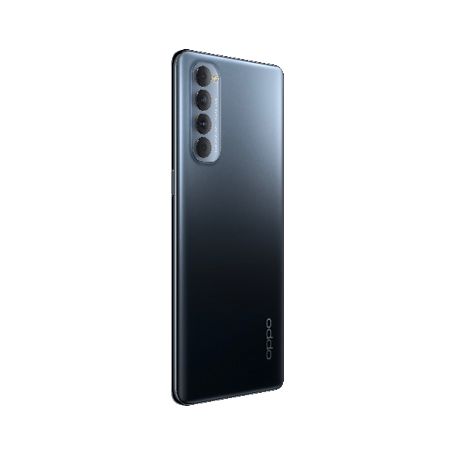
OPPO Reno4 Pro
With a beguiling design and insanely fast 65W fast charging, the OPPO Reno 4 Pro is an excellent choice for anyone who wants to binge-watch all day and not worry about charging their phone.

